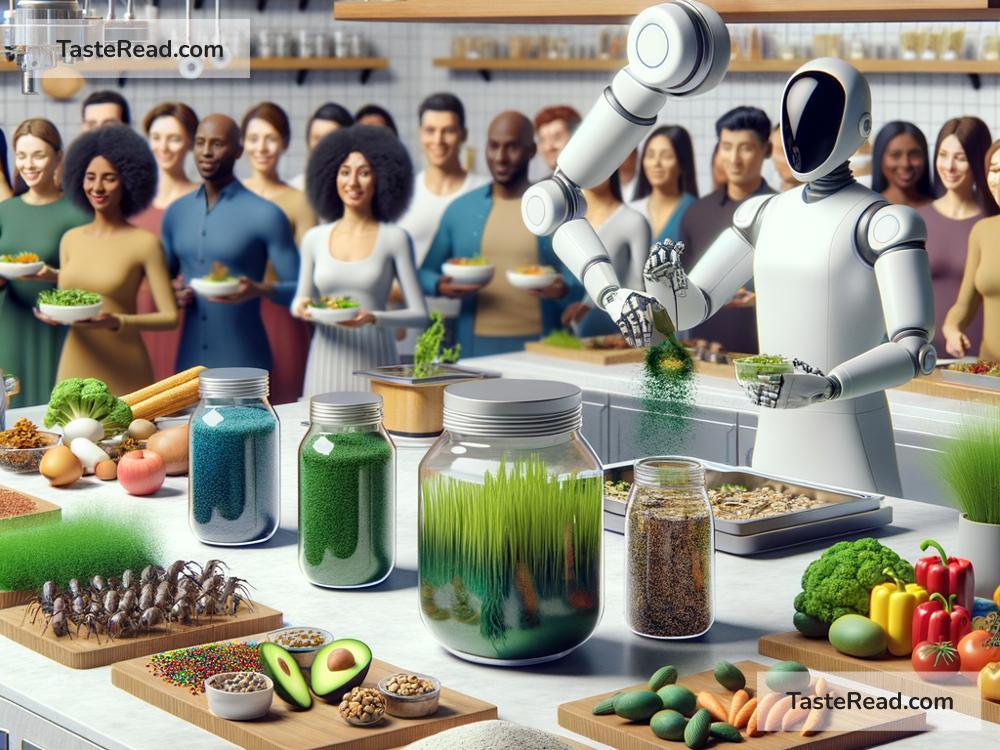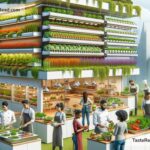The Future of Food: Building Inclusive Systems for a Sustainable World
Food is a basic need for every human being, yet our global food system faces some big challenges. Climate change, poverty, population growth, and unequal access to resources make feeding the world challenging. With over 8 billion people to feed and limited resources, we need smarter, fairer solutions to ensure everyone has enough to eat—now and in the future. The future of food depends on creating inclusive, sustainable systems that work for people, the planet, and prosperity.
Understanding the Challenges
Our current food system has many problems. Millions of people go hungry every day, even though the world produces enough food to feed everyone. At the same time, food waste is a huge issue, with roughly one-third of all food produced going uneaten. The agriculture industry is also a major contributor to climate change, producing nearly a quarter of all greenhouse gas emissions. Additionally, small-scale farmers, who are critical to the food supply in many countries, often live in poverty due to low pay and lack of access to resources.
As the global population grows, these challenges will become tougher. Scientists estimate that by 2050, we will need to produce 56% more food than we did in 2010 to meet demand. But producing more food isn’t enough. The way we produce, distribute, and consume food must change to ensure fairness, sustainability, and resilience.
Embracing Inclusive Systemic Solutions
Inclusive systemic solutions mean looking at the food system as a whole—from farmers and food production to distribution and consumption—and ensuring that everyone benefits. Here are some examples of innovative ways to create a fairer, more sustainable food future:
1. Empowering Farmers
Farmers are at the heart of food production, but many struggle to make a living. Small-scale farmers, especially in developing countries, often lack access to technology, training, and markets. Supporting these farmers with better tools, education, and financial services can help them grow more food efficiently and sustainably. Additionally, fair pricing for their crops ensures that they earn enough to support themselves and their families.
Governments, companies, and organizations are working to empower farmers through programs that promote sustainable farming practices, such as agroecology and regenerative agriculture. These methods focus on protecting the environment while improving yields, creating a win-win for farmers and the planet.
2. Reducing Food Waste
Food waste is a major problem that can be solved with innovative solutions. For example, better storage and transportation systems can keep food fresh for longer, reducing waste. Local food networks, such as farmers’ markets, can also reduce the distance food travels, cutting down on spoilage.
At the consumer level, educating people about the importance of wasting less food can make a big difference. Simple actions, like buying only what you need, using leftovers creatively, and composting, can help reduce food waste in homes.
3. Promoting Plant-Based Diets
Another way to make the food system more sustainable is by encouraging plant-based diets. Animal agriculture uses a lot of resources, including land, water, and energy, and contributes to greenhouse gas emissions. Shifting to more plant-based foods can help reduce the environmental footprint of our diets.
Innovations like plant-based meats and lab-grown proteins are making this shift easier. These foods look and taste like meat but are made using methods that are better for the planet. As these products become more affordable and widely available, more people may choose plant-based options.
4. Technology and Innovation
Technology is playing a big role in shaping the future of food. From AI-powered farming tools to vertical farms that grow crops in urban areas, innovation is transforming how we produce food. Precision agriculture uses sensors, drones, and data analytics to help farmers use resources like water and fertilizer efficiently, boosting yields while protecting the environment.
Food technology is also creating new possibilities. For example, scientists are developing ways to make food from air, algae, or insects, which require fewer resources to produce. These alternatives could help address food shortages in the future.
5. Ensuring Equity in Food Access
A fair food system means everyone has access to healthy, affordable food, no matter where they live or how much money they have. Around the world, there are efforts to improve food access in underserved communities by building local food networks, supporting community gardens, and providing free or low-cost meals.
Policymakers and organizations are also working to ensure food security through subsidies, food banks, and school meal programs. These initiatives help level the playing field so that everyone, especially vulnerable groups, has enough to eat.
A Collective Responsibility
The future of food isn’t just the responsibility of farmers or scientists—it’s a collective effort. Governments, companies, communities, and individuals all have a role to play in creating a sustainable, inclusive food system. Choosing to buy local, reduce waste, eat plant-based foods, and support fair farming practices are all ways each of us can help.
Conclusion
The future of food depends on finding sustainable and inclusive solutions that benefit everyone. By empowering farmers, reducing food waste, embracing technology, promoting plant-based diets, and improving access to food, we can create a system that feeds the world fairly and responsibly. These changes won’t happen overnight, but together we can build a food future that works for people, the planet, and prosperity.
The road ahead may be challenging, but the possibilities are exciting. With innovation, collaboration, and compassion, we can transform the way we grow, share, and enjoy food—and ensure a brighter future for generations to come. Let’s work together to make sure no one goes hungry and that our planet thrives for years to come.


